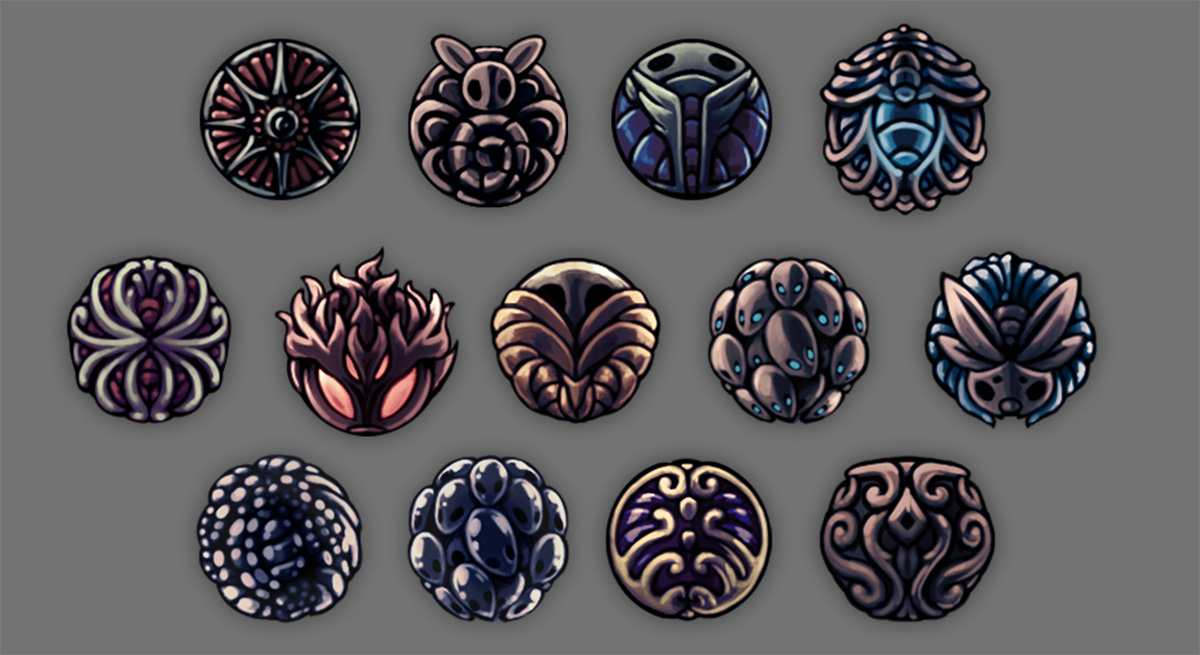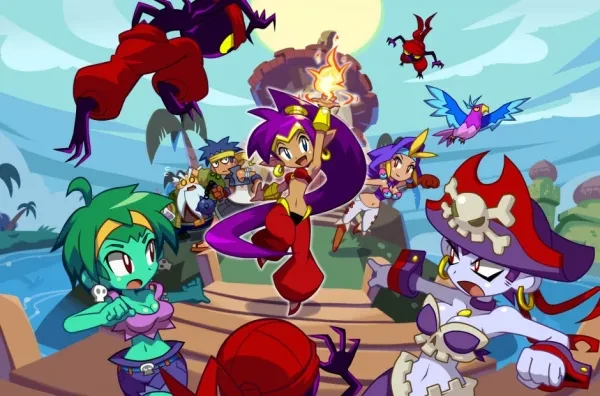
These are the best games presently available in the exploration focused Metroidvania genre.
The "Metroidvania" genre, named after its inspiration from Nintendo's Metroid series (particularly Super Metroid), and Konami's Castlevania series (particularly Symphony of the Night) has exploded with games inspired by both, especially with the growing scene of independent developers trying to give their own take on this subgenre.
For that reason, it may be hard to narrow down some of the best that are available, which is what this list is about, so there will be a focus on what makes each particular game good and what makes it stand out amongst the rest. This list will also be covering them in alphabetical order instead of quality, for what one player may like in one game may be different than another, so hopefully someone's tastes are fulfilled with this list.
10. Axiom Verge
Axiom Verge is very much inspired directly by a style similar to H.R. Giger, and that’s very clear in the visual look of the game. Having a literal alien-like setting helps emphasize one of the more remarkable aspects of a Metroid game with regards to having an isolating and foreboding atmosphere. You play as Trace, a scientist who wakes up in a world known as Sudra, and Trace has to help figure out what’s going on in that world by helping a machine known as Elsenova to stop an evil scientist by the name of Athetos.
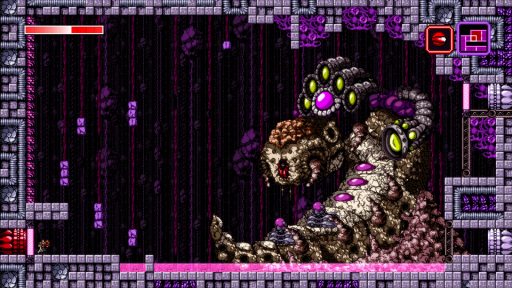
Grotesque creatures are aplenty.
And much like someone should expect in this genre with a more Metroid-like approach to movement and room progression, the game focuses on you using fewer yet more focused skills and abilities that you collect throughout the game, but this is expanded a great deal as your main firearm gets to choose between a large assortment of shot types that play a role in combat. One particular weapon you find is one of the games most unique in the form of the Address Disruptor, for it's a weapon that actually creates a pixelated image that distorts the appearance and function of enemies when hit.
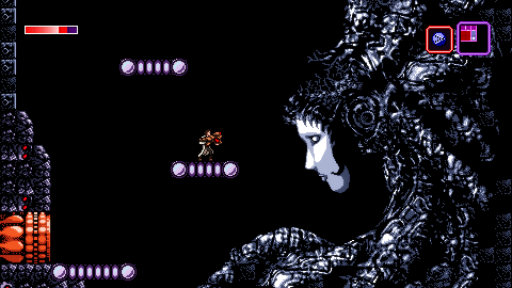
Trace exploring the mysterious world of Sudra.
9. Dead Cells
The most recently released game on this list is the "RogueVania" known as Dead Cells, a game I have a very hard time putting down. Inspired by roguelikes, the game focuses on randomly generated environments and a deep variety of weapons, skills, and abilities. One of the major hooks to the game is its combat, which is deliberate and deadly. Similarly to Dark Souls games, your healing items are limited, your attacks and dodges need to be timed, and death is punishment which also becomes a learning experience. When you’re dead, you’re dead, and this forces you to start the game over. In fact, the hook of the gameplay is part of the reason the game has very little story, for what is there is more of window dressing. You play as a character known as the Prisoner on an island afflicted with a type of plague, and it’s up to you to traverse to the nearby castle and kill the king. Story is not the games strong point, being sacrificed for gameplay. The story is just an excuse to let you play with the systems the game introduces, so don’t expect something that’s going to make you question the universe or anything..
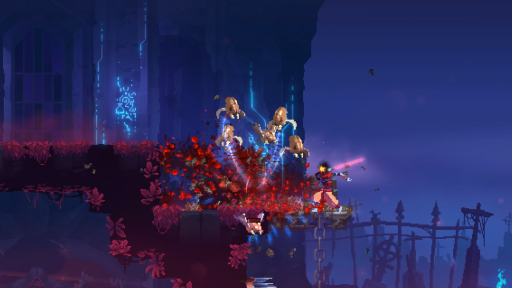
Even little critters explode into chunky bits!
Throughout each stage you collect cells, which are used to purchase upgrades, which can be used on various items like blueprints you find to add to your pool of abilities and skills in your next run, allowing each playthrough to offer some sense of progress even if it doesn't result in a complete run. What the game loses in focused, specified level and enemy design is gained with the randomized nature at play, allowing each run to present different challenges, different build types to accommodate the weapons and abilities you find, and how you want to play that particular run.
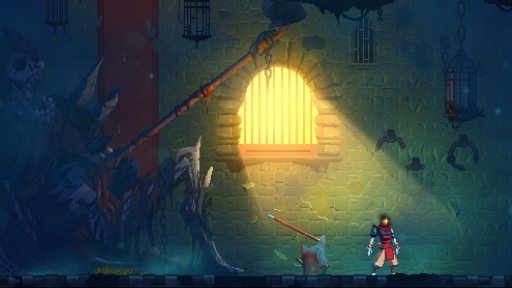
The Prisoner ready to chase towards the Throne Room, again...
8. Dust: An Elysian Tale
What Dust brings to the table compared to other Metroidvanias is by having an approach similar to games like Odin Sphere and Muramasa: The Demon Blade, and those kinds of games focused on combat. It’s not Devil May Cry or Bayonetta, but it gets the job done, and incorporating that into the usual formula of Metroidvania games with obtaining new abilities for exploration makes for an interesting time. You play as Dust, who is greeted by a living sword by the name of the Blade of Ahrah. alongside the swords companion, a flying creature named Fidget. The three set off to a town, and while visiting it, the town is overrun with monsters. The monster outbreak has a connection to an event known as the Moonblood, and it is an event that Dust’s past has an association with, which draws him further to figuring and solving this mystery.
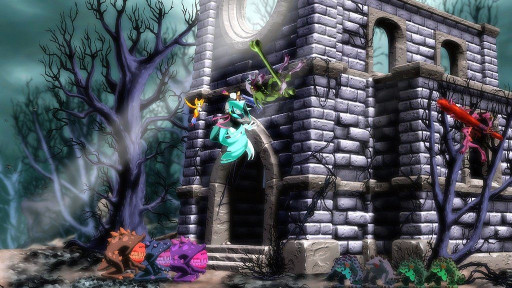
The game looks like a drawing come to life.
With combat more inspired by beat-em-ups and having movesets you can create combos with, there's much more depth when confronting enemies than nearly anything else on this list With absolutely gorgeous artwork, combat and the flow of battle take more of the emphasis in this game over exploration, though it isn't lacking at all in the latter department.
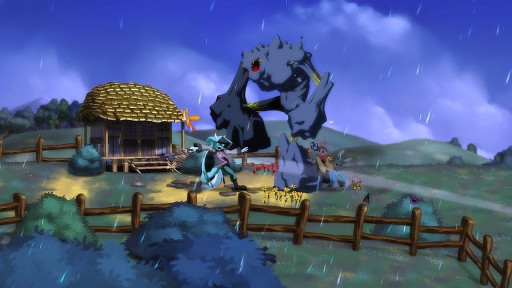
Dust fighting monsters
7. Guacamelee
Similarly to Dust, Guacamelee is a Metroidvania that has a stronger emphasis on combat compared to most games listed here, but it's hard to avoid that when the protagonist becomes a luchador; beating people up is just the way luchadors get things done. You play as Juan Aguacate, a farmer, going to visit his childhood friend El Presidente’s Daughter (yes, this is her name), but along the way she is kidnapped by a skeleton by the name of Carlos Calaca (Calaca, get it? A skeleton!), and amidst the struggle Juan is killed. Juan is later brought back to life by a luchador named Tostada, where Juan is given a luchador mask to help him defeat Calaca and save his friend.
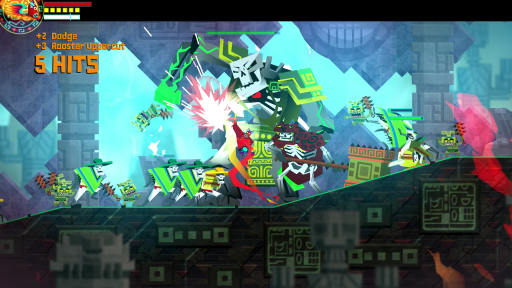
You’re always never too far away from brawling.
The charming, Mexican-influenced style to the game really gives the game its own identity, even when comparing it to games outside of its genre. In addition to this, this is one of the few Metroidvania-styled games that supports co-op with support for an additional player, which makes it even more unique when compared to other titles. It may have simplistic combat when compared to the likes of Dust, but it gets the job done and the style of combat captures a type of parody of luchador wrestling. Consider bringing a tag team partner to the experience.
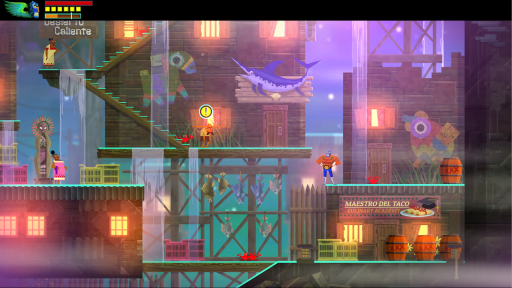
Juan exploring a town.
6. Hollow Knight
Hollow Knight is, without question, the most atmospheric game on this list, and one of my favorite games of the last few years. The dark atmosphere really sets the tone for the whole experience, which starts as soon as you boot it up. Hollow Knight is a game that makes it clear as early as the first area that you're going to be visiting a cryptic, mysterious world that feels as if it's existed and something has gone wrong in it long before you arrive. You play as a character known only as The Knight, who seemingly seems drawn to the mysterious land he’s traveling to. Why he’s there remains a mystery, but it becomes clear almost instantly that the land he’s traversing through has experienced great change, destruction, and decay.
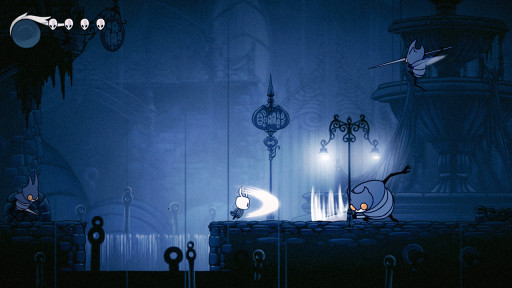
Hollow Knight uses few colors, but they’re used to incredible effect.
Nearly every room in the game is just brimming with history, feeling like a lived in space that's been affected by the events of the game, allowing the games story to be told by environment as much as dialog, and perhaps even more so. The game is brimming with charm, with focus, with intention in nearly every corner you can explore. It may be hard to explain, but Hollow Knight is one of those games where the atmosphere of it seems primary, and the function of exploration or combat appear to be secondary to that, creating a game where it feels like the world was made and the mechanics the player uses are to compliment the world, and not the other way around.
If there’s one game I’d suggest is a MUST play, it’s this.
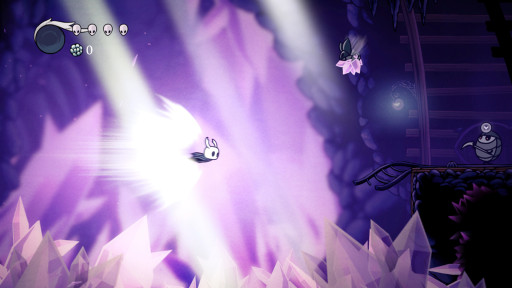
The Knight fighting enemies. Do they still their of their own will, or are they too remnants of what’s happened to this world?
5. La-Mulana
La-Mulana has a history for being a seemingly obtuse game, making it one of the hardest sells of any game on this list. This is due to the fact the game takes the concept of exploration and intertwines it with a temple full of mystery, traps, and puzzles to solve, helping create the feeling of experiencing an ancient space, one that has to be learned in your journey as not merely a sense of discovery but a sense of understanding. The game focuses, and succeeds even, at making you feel completely lost on countless occasions, and that’s precisely the point! You play as Lemeza Kosugi, an archeologist, who has received a letter from his father about the discovery of the ancient tomb known as La-Mulana, which is said to be the birthplace for all civilizations on the planet. Thus, Lemeza sets out to uncover and discover the mysteries of La-Mulana.

The adventure begins...
Inspired by MSX games, La-Mulana's style of being cryptic may be potentially off putting to some, but those who can commit and learn to appreciate its intentions may be deep enjoyment out of it. Consider avoiding walkthroughs for this game, as looking for solutions truly does take away from the enjoyment of discovering a solution yourself. This is, without question, the most “confusing” game on this list due to the nature of its design, but its one that has a tremendous payoff if one opens up to appreciate its intentions. For people who get satisfaction at solving puzzles, this is the sort of game screaming for your attention.
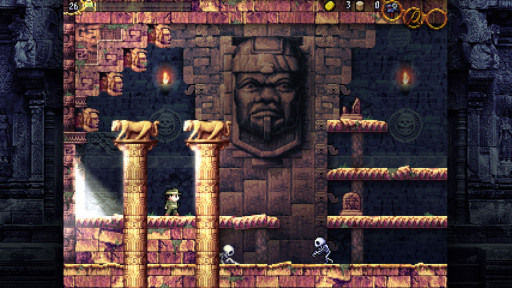
Lemeza entering La-Mulana
4. Ori and the Blind Forest
There's no other way to start describing Ori without mentioning it's absolutely gorgeous. Oni and the Blind Forest is a game where love was put into every single aspect of its development. Every environmental asset is uniquely designed with no repeating elements, speaking about the visual care and passion that went into the game. This is unheard of in modern games, where asset reuse is done to help mitigate costs. It also speaks to how crazy the team was, willing to go down this kind of path; it speaks more on creativity and less on cost, and we should always have more of this. You play as Ori, a guardian spirit, who teams up with a blue orb named Sein to help restore life back to a withering forest suffering from the aftermath of a devastating storm.
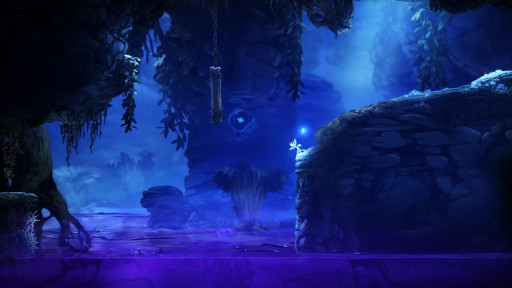
The forest is as much of a place as it as a seeming enemy.
On a technical level, it focuses on having a seamless experience with no load times whatsoever to interrupt the experience, and for a Metroidvania, those types of load times would be mere seconds; they fact even something like that was seen as something to avoid is a testament to how much care and consideration went into the experience. And describing the game as an "experience" is perhaps the best term to use. There's nothing necessarily unique in its design to make it stand out when talking about features, items, or how you progress in the interconnected map to compare it to other games directly, but the sheer quality, focus, and intention of its parts make it a wonderful experience to play and enjoy. It's a wonderful title not for a specific moment, but the fact the whole game feels so cohesive, led so feverishly by passion and care, it's hard not to be enamored by it all.

Ori navigating the mysterious forest
3. Rogue Legacy
Rogue Legacy is a roguelike with humor, and this is seen as soon as you see the character sprites. Similarly to the previously mentioned Dead Cells, Rogue Legacy features a system that changes your playstyle and experience after playing, struggling, and dying as after you die, you start over again but as a randomly generated heir to your character, often coming with traits that drastically change the experience. The story is merely window dressing: you play as an aforementioned generated member of a nondescript family attempting to enter and ultimately conquer the evil residing inside of it.

This isn’t a filter, but an inherited trait on the character!
This can include a character who is colorblind, so the game actually removes color from that particular run, to more profound changes like having a character afflicted with dwarfism, as that plays a role mechanically by allowing you to explore areas that cannot be ventured through otherwise. In addition to the heirs are classes, which you unlock as you progress through the game, which work alongside your character to create more varied play styles, such as having a mage who focuses more on ranged combat and advanced spells.

One of many in this adventurous family has been slain.
2. Salt and Sanctuary
Salt and Sanctuary feels very much like a side scrolling take on Dark Souls. Set on an island your character gets shipwrecked on, it’s up to you to rescue a princess who was on the ship, only to be abducted. Focusing on stamina usage, a resource similar to souls in the form of Salt, and a mechanic where you only have one chance to get your lost Salt after death, the inspiration from the Souls games is worn openly throughout the game.
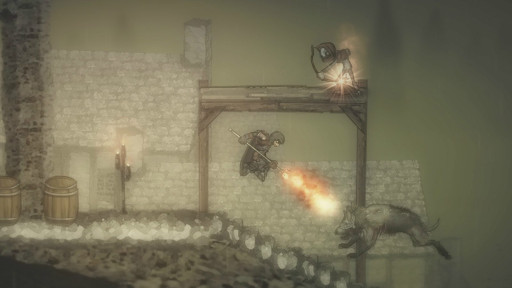
Chaos and dread is found in every corner of this world.
This is a game more focused on those who like the elements found in the Dark Souls series, as its strengths are in those places much more than what may be found in traditional Metroidvanias with an interconnected map and character abilities you unlock. This isn’t a game for casuals.
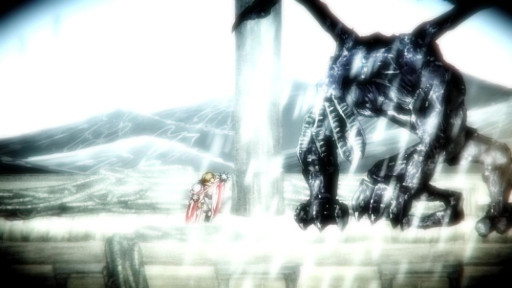
Terror seems to exist throughout the land
1. Shantae: Half-Genie Hero
Shantae has been a series mostly known for its handheld titles on Nintendo platforms, but over the last few years a number of those games have been ported over to the PC. You play as the series main protagonist, Shantae, who is warned in one her dreams about a looming doom that only she can stop. After awakening and doubting the truth of such a dream, it doesn’t take long for some of the concerns of the dream to manifest. Her rival, Risky Boots, begins a siege onto the island and steals blueprints to something known as Dynamo, designed to protect the city, and it’s up to Shantae to get them back.
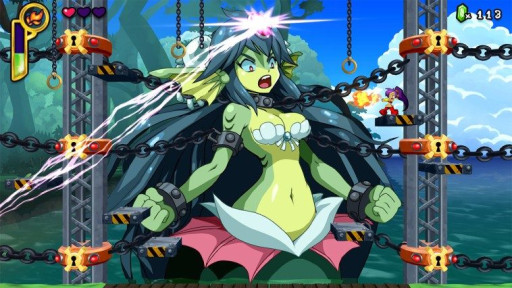
Bosses are big and bombastic.
Half-Genie Hero, which is the fourth game in the series (all of the games except the original are now on PC, by the way), differentiates itself from the other games on this list by featuring transformations as a core mechanic. What these transformations do is allow Shantae to turn into a different creatures to help her navigate the areas of the game. For example, transforming into a mermaid would allow the player to freely move through areas that have a lot of water. In this sense, the items that help you progress through the game change Shantae's form and function, and quite literally, in fact.
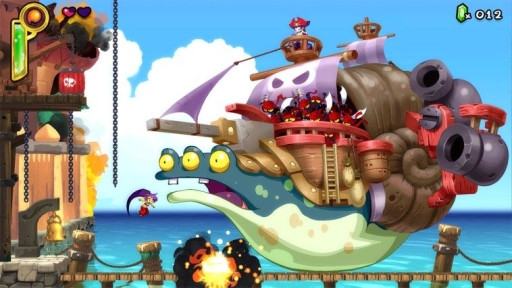
As always, Risky Boots is causing mischief for Shantae.
You may also be interested in



